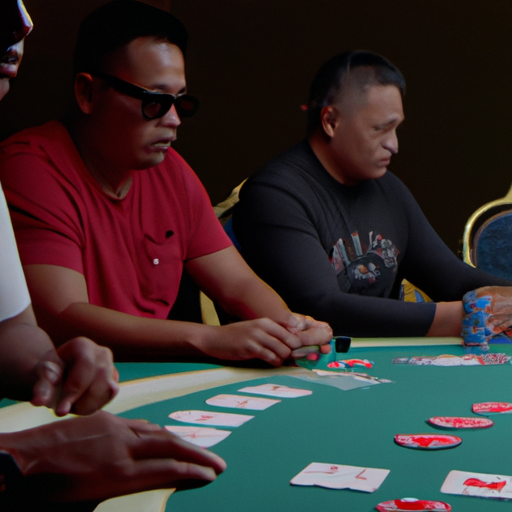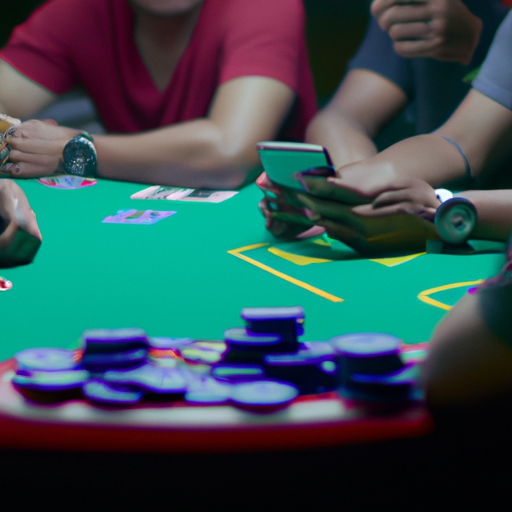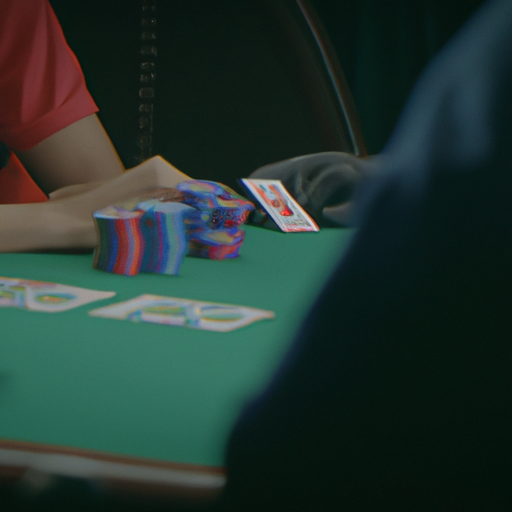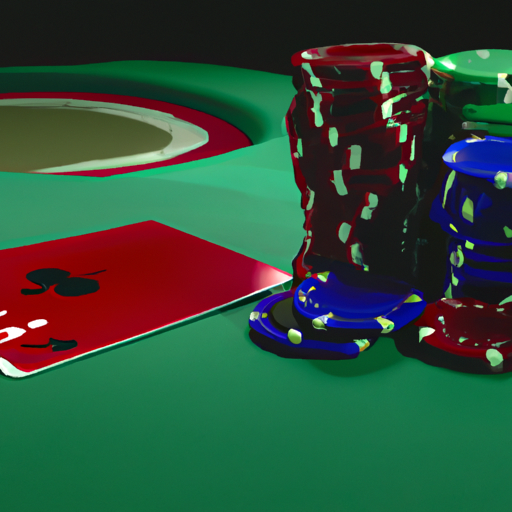Poker Strategy: Tips and Tricks from Filipino Poker Pros

Mastering the Art of Bluffing: Insights from Filipino Poker Pros
Poker is a game of skill, strategy, and luck. One of the most important skills a poker player can have is the ability to bluff effectively. Bluffing is the act of making your opponents believe that you have a better hand than you actually do. It is a crucial part of the game, and mastering it can make all the difference between winning and losing.
Filipino poker pros are known for their exceptional bluffing skills. They have a reputation for being fearless and aggressive at the table, and their ability to bluff is a big part of their success. In this article, we will share some tips and tricks from Filipino poker pros on how to master the art of bluffing.
The first tip is to choose your spots carefully. Bluffing is not something you should do all the time. It is a situational play that should be used sparingly. You need to be able to read your opponents and the situation at the table to determine when it is appropriate to bluff. Filipino poker pros are masters at reading their opponents and knowing when to make a move.
The second tip is to be confident. Bluffing requires confidence and conviction. You need to be able to sell your bluff to your opponents convincingly. If you are hesitant or unsure, your opponents will pick up on it and call your bluff. Filipino poker pros are known for their confidence at the table. They exude an air of confidence that makes their opponents think twice before calling their bluffs.
The third tip is to be unpredictable. If your opponents can predict your moves, they will be able to counter them effectively. You need to keep your opponents guessing by mixing up your play and being unpredictable. Filipino poker pros are masters at being unpredictable. They use a variety of tactics to keep their opponents off-balance, including changing their bet sizes, using different betting patterns, and varying their play style.
The fourth tip is to use your table image to your advantage. Your table image is the perception that your opponents have of you based on your previous actions at the table. If you have a tight table image, your opponents will be more likely to believe that you have a strong hand when you make a big bet. If you have a loose table image, your opponents will be more likely to believe that you are bluffing when you make a big bet. Filipino poker pros are experts at using their table image to their advantage. They are able to manipulate their opponents’ perceptions of them to make their bluffs more effective.
The fifth and final tip is to know when to fold. Bluffing is a high-risk, high-reward play. Sometimes, your bluff will be called, and you will lose the hand. It is important to know when to fold and cut your losses. Filipino poker pros are not afraid to fold when they know they are beat. They understand that bluffing is not a guaranteed strategy and that sometimes it is better to live to fight another day.
In conclusion, mastering the art of bluffing is a crucial part of becoming a successful poker player. Filipino poker pros are known for their exceptional bluffing skills, and by following their tips and tricks, you can improve your own bluffing game. Remember to choose your spots carefully, be confident, be unpredictable, use your table image to your advantage, and know when to fold. With practice and patience, you too can become a master bluffer at the poker table.
Reading Your Opponents: Tips and Tricks from Filipino Poker Pros

Poker is a game of skill, strategy, and luck. One of the most important skills a poker player can have is the ability to read their opponents. Knowing how to read your opponents can give you a significant advantage at the poker table. In this article, we will share some tips and tricks from Filipino poker pros on how to read your opponents.
The first tip is to pay attention to your opponents’ body language. Filipino poker pro, Mike Takayama, says that “body language is a big part of poker. You can tell a lot about a player’s hand by the way they act.” Look for any signs of nervousness, such as fidgeting or sweating. Also, pay attention to their facial expressions. If they seem relaxed and confident, they may have a strong hand. On the other hand, if they seem tense or worried, they may be bluffing.
Another tip is to observe your opponents’ betting patterns. Filipino poker pro, John Tech, says that “betting patterns can reveal a lot about a player’s hand.” For example, if a player suddenly starts betting aggressively, they may have a strong hand. On the other hand, if a player suddenly stops betting, they may be trying to lure you into a trap. Pay attention to how much your opponents bet and when they bet. This information can help you make better decisions at the poker table.
Filipino poker pro, Lester Edoc, suggests paying attention to your opponents’ chip stacks. “If a player has a small chip stack, they may be more likely to go all-in,” he says. “On the other hand, if a player has a large chip stack, they may be more conservative with their bets.” Knowing how much your opponents have at stake can help you make better decisions about your own bets.
Another tip is to listen to your opponents’ conversations. Filipino poker pro, Marc Rivera, says that “sometimes players will give away information without even realizing it.” Listen for any hints about their hand or their strategy. For example, if a player mentions that they have been playing tight all night, they may be more likely to fold. If a player mentions that they have been bluffing a lot, they may be more likely to continue bluffing.
Finally, Filipino poker pro, Neil Arce, suggests paying attention to your opponents’ playing style. “Every player has their own style,” he says. “Some players are aggressive, while others are more passive. Knowing your opponents’ style can help you predict their moves.” For example, if a player is known for being aggressive, they may be more likely to bluff. If a player is known for being passive, they may be more likely to fold.
In conclusion, reading your opponents is an essential skill for any poker player. By paying attention to your opponents’ body language, betting patterns, chip stacks, conversations, and playing style, you can gain valuable information that can help you make better decisions at the poker table. Remember, poker is a game of skill, strategy, and luck. By mastering the art of reading your opponents, you can increase your chances of winning at the poker table.
Maximizing Your Winnings: Strategies from Filipino Poker Pros
Poker is a game of skill, strategy, and luck. It requires players to make calculated decisions based on the cards they are dealt and the actions of their opponents. To maximize your winnings in poker, you need to have a solid strategy and be able to read your opponents. In this article, we will share some tips and tricks from Filipino poker pros that can help you improve your game and increase your chances of winning.
One of the most important things to remember when playing poker is to be patient. You should not rush into making decisions or taking actions without carefully considering your options. This is especially true when it comes to betting. You should only bet when you have a strong hand or when you think your opponent is weak. Betting too much or too often can quickly deplete your bankroll and put you at a disadvantage.
Another key strategy in poker is to be observant. You should pay close attention to the actions of your opponents and try to read their body language and facial expressions. This can give you valuable information about their hand and help you make better decisions. For example, if your opponent is fidgeting or looking nervous, they may have a weak hand and be bluffing.
In addition to being observant, you should also be adaptable. You should be able to adjust your strategy based on the situation and the players at the table. For example, if you are playing against aggressive players, you may need to play more conservatively and wait for strong hands. On the other hand, if you are playing against passive players, you may be able to bluff more often and take advantage of their reluctance to bet.
One of the most effective strategies in poker is to play tight-aggressive. This means playing only strong hands and being aggressive when you do play. This can help you win more pots and build your chip stack. However, you should also be aware of your position at the table and adjust your strategy accordingly. For example, if you are in early position, you may need to play more conservatively and wait for stronger hands.
Another important aspect of poker strategy is bankroll management. You should always play within your means and avoid taking unnecessary risks. This means setting a budget for your poker games and sticking to it. You should also avoid chasing losses and trying to win back money that you have lost. This can lead to reckless play and further losses.
Finally, you should always be learning and improving your game. This means studying the game, reading books and articles, and watching videos of professional players. You should also be open to feedback and criticism from other players and be willing to make changes to your strategy when necessary.
In conclusion, maximizing your winnings in poker requires a combination of skill, strategy, and luck. By being patient, observant, adaptable, and playing tight-aggressive, you can increase your chances of winning. You should also practice good bankroll management and always be learning and improving your game. By following these tips and tricks from Filipino poker pros, you can take your game to the next level and become a more successful player.





